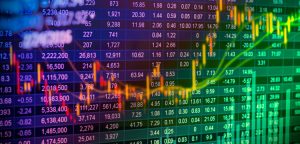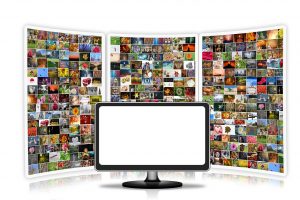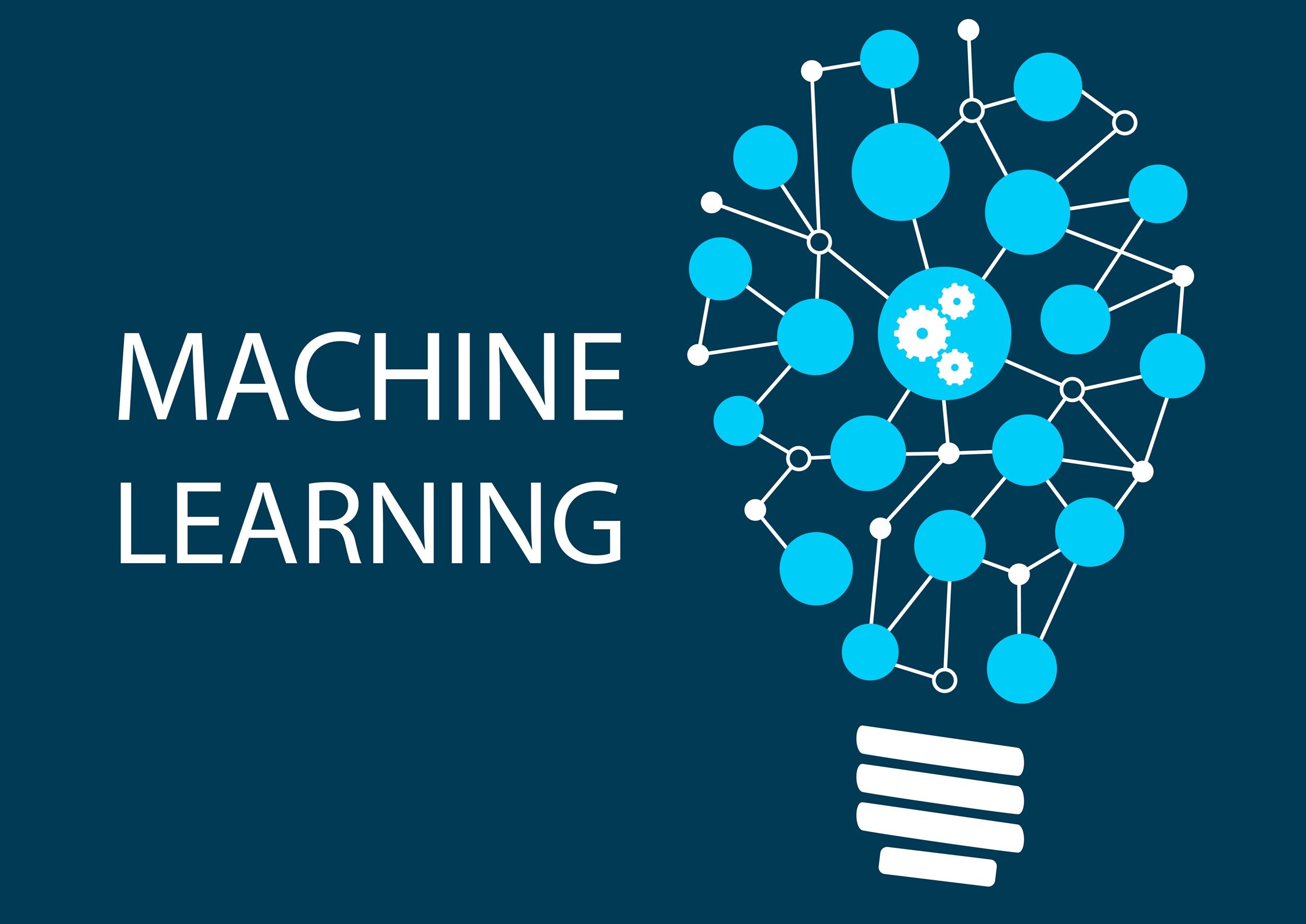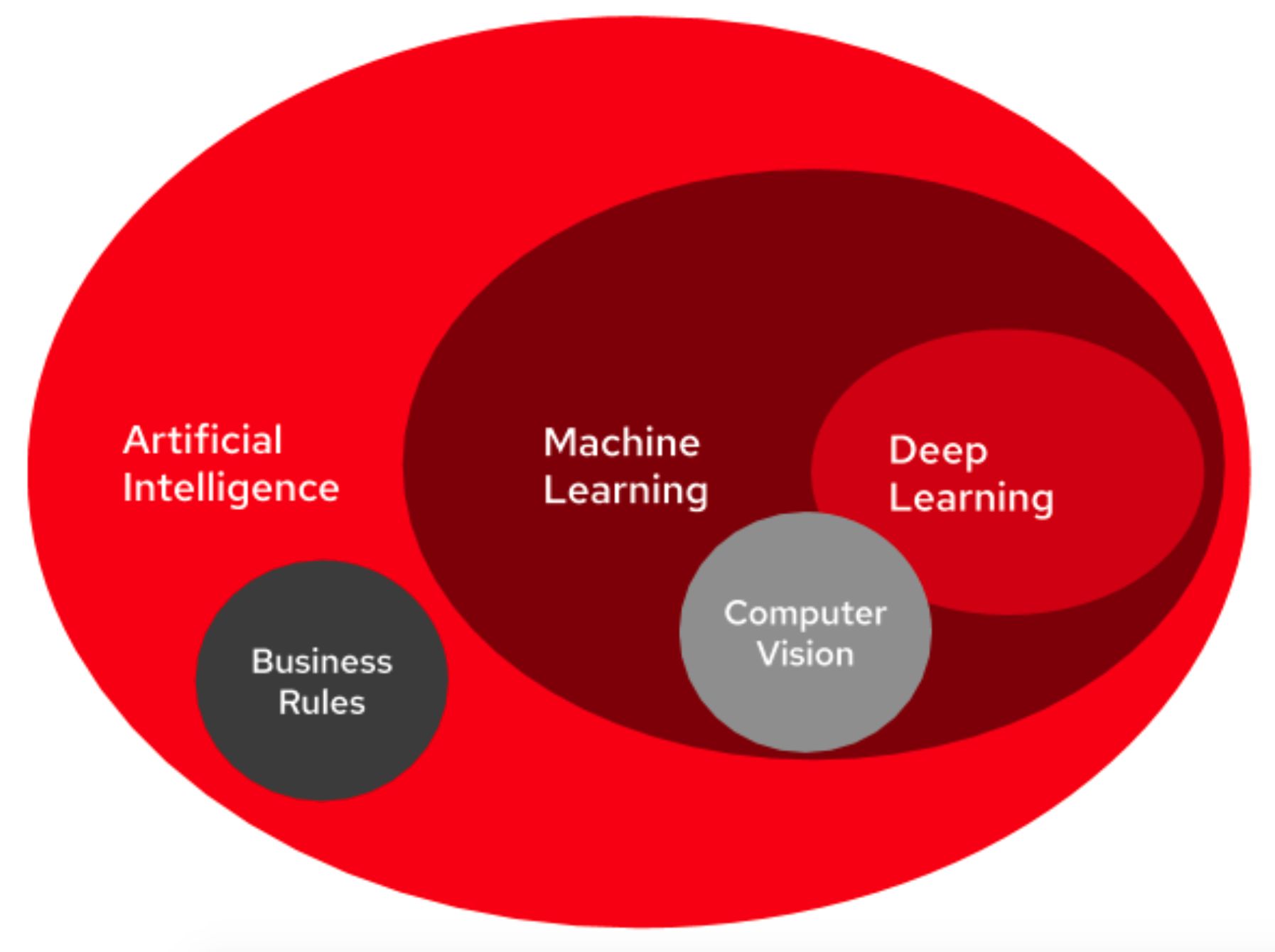Introduction
Machine learning is revolutionizing the digital marketing landscape, and one platform where it has made significant strides is Google Ads. With its advanced algorithms and intelligent automation, machine learning has opened up new possibilities for marketers to improve their advertising strategies and achieve greater success.
Understanding how machine learning works can be a game-changer for marketers looking to maximize the effectiveness of their Google Ads campaigns. By harnessing the power of this technology, marketers can enhance ad targeting, bidding strategies, ad creative optimization, personalization, ROI, and much more.
In this article, we will explore two key ways in which marketers can benefit from machine learning in Google Ads. We will delve into the various opportunities it provides for improving ad targeting, bidding strategies, ad creative optimization, personalization, ROI, and overall ad performance. By leveraging the power of machine learning, marketers can stay ahead of the game and achieve better outcomes from their Google Ads campaigns.
Understanding machine learning in Google Ads
Before diving into the ways marketers can benefit from machine learning in Google Ads, it is essential to have a basic understanding of what machine learning is and how it functions within the platform. Machine learning, in simple terms, is a branch of artificial intelligence that enables computers to learn and improve from experience without being explicitly programmed.
In the context of Google Ads, machine learning algorithms analyze vast amounts of data collected from user behavior, conversions, demographics, and other relevant factors. These algorithms then use this data to make accurate predictions and decisions, empowering marketers to optimize their campaigns more effectively.
One of the primary advantages of machine learning in Google Ads is its ability to process and interpret data at a scale that would be impossible for humans alone. By analyzing millions of data points in real-time, machine learning can unearth valuable insights and patterns that can inform advertising strategies.
Furthermore, machine learning continuously adapts and improves over time. As more data is collected and analyzed, the algorithms become more refined and sophisticated, taking into account the ever-changing dynamics of the advertising landscape. This means that marketers can benefit from increasingly accurate predictions and recommendations as they harness the power of machine learning.
Google Ads incorporates machine learning in various areas, such as ad targeting, bidding strategies, ad creative optimization, personalization, and more. By understanding the underlying mechanisms of machine learning in Google Ads, marketers can leverage its capabilities to enhance their campaigns and achieve better results.
Improving ad targeting with machine learning
One of the key ways marketers can benefit from machine learning in Google Ads is by improving ad targeting. With traditional advertising methods, marketers often rely on manual input and assumptions to target their ads to the right audience. However, machine learning brings a new level of precision and efficiency to the targeting process.
Machine learning algorithms analyze vast amounts of data, including user demographics, browsing behavior, search history, and more, to identify patterns and predict user intent. This enables marketers to deliver their ads to the most relevant and receptive audience.
Google Ads leverages machine learning to offer various targeting options, such as demographic targeting, interest targeting, and remarketing. Machine learning algorithms can identify specific audience segments that are more likely to engage with ads and convert, helping marketers optimize their campaigns for maximum impact.
Additionally, machine learning algorithms continuously learn and adapt based on user responses and engagement with ads. This means that over time, the targeting becomes more refined and accurate, as the algorithms optimize for higher conversion rates.
Another advantage of machine learning in ad targeting is its ability to identify new audience segments that marketers may not have previously considered. By analyzing user data, machine learning can uncover hidden patterns and similarities, allowing marketers to expand their reach and target untapped audiences.
Overall, machine learning has transformed ad targeting in Google Ads, enabling marketers to reach the right audience with precision and efficiency. By leveraging the power of machine learning, marketers can optimize their targeting strategies and improve the overall performance of their campaigns.
Optimal bidding strategies with machine learning
Bidding is a critical aspect of running successful Google Ads campaigns, and machine learning has greatly revolutionized the way marketers approach bidding strategies. By analyzing vast amounts of data and user behavior, machine learning algorithms can help marketers optimize their bids for maximum ROI.
Machine learning algorithms in Google Ads take into account various factors such as ad quality, competition, historical performance, and user intent to determine the optimal bid for each auction. These algorithms continuously learn and adapt, refining their bidding strategies over time to maximize the chances of winning auctions at the most efficient cost.
One of the key advantages of machine learning in bidding strategies is its ability to make real-time bid adjustments. These adjustments take into account dynamic factors such as location, device, time of day, and user preferences. By analyzing real-time signals, machine learning algorithms can automatically adjust bids to reach the right audience at the right time, improving the overall performance of the campaigns.
Furthermore, machine learning algorithms can identify bid patterns and trends that may not be obvious to human marketers. By analyzing historical performance data, these algorithms can detect patterns that indicate when bidding adjustments should be made for better results. This predictive capability allows marketers to optimize their bids proactively and stay ahead of the competition.
Machine learning also empowers marketers to set specific goals for their bidding strategies. Whether it’s maximizing conversions, achieving a target cost per acquisition (CPA), or maximizing return on ad spend (ROAS), the algorithms can adapt the bidding strategy to meet the desired goals. This level of flexibility and customization ensures that marketers achieve the best possible outcomes from their advertising budgets.
Overall, machine learning has fundamentally transformed bidding strategies in Google Ads. By leveraging the power of machine learning algorithms, marketers can optimize their bids in real-time, adapt to changing conditions, and achieve better performance and ROI from their campaigns.
Leveraging machine learning for ad creative optimization
The success of an advertising campaign heavily relies on the effectiveness of the ad creatives. Machine learning in Google Ads offers valuable tools and insights to help marketers optimize their ad creatives for maximum impact and engagement.
Machine learning algorithms analyze various factors such as ad design, copy, imagery, and user engagement to identify which ad creative elements perform best with different audience segments. This helps marketers understand what resonates with their target audience and enables them to refine their creatives accordingly.
One way machine learning enhances ad creative optimization is through automated ad testing. These algorithms can automatically test different ad variations and identify the most effective combinations. Marketers can then use this data to refine their ad creatives and create more compelling and engaging advertisements.
Another benefit of utilizing machine learning for ad creative optimization is personalization. These algorithms can dynamically tailor ad creatives to different audience segments based on their preferences, browsing behavior, and past interactions. This level of personalization increases the relevance of the ads, resulting in higher engagement and conversion rates.
Furthermore, machine learning can analyze user responses and engagement with ad creatives in real-time. By continuously learning from these data points, the algorithms can make instant adjustments to optimize ad creatives for improved performance. This agility ensures that marketers stay ahead of the competition and deliver the most impactful ads to their target audience.
Machine learning algorithms also provide valuable insights into the performance of ad creatives. Marketers can gain a deeper understanding of which elements and messaging strategies drive the best results. This data-driven approach enables continuous improvement and refinement of ad creatives for better campaign performance.
In summary, leveraging machine learning in Google Ads allows marketers to optimize their ad creatives for maximum impact and engagement. By analyzing user data, conducting automated ad tests, personalizing ad experiences, and gaining valuable performance insights, marketers can create compelling and effective ad creatives that drive better results for their campaigns.
Personalizing ad experiences with machine learning
Personalization has become a fundamental aspect of successful advertising, and machine learning in Google Ads has revolutionized the way marketers can deliver personalized ad experiences to their target audience. By leveraging machine learning algorithms, marketers can create tailored and relevant ads that resonate with individual users.
Machine learning algorithms analyze vast amounts of data including user demographics, behavior, interests, and preferences to understand the unique characteristics of each user. This enables marketers to personalize ad content, messaging, and creative elements to align with the specific needs and preferences of their audience.
One way machine learning facilitates personalized ad experiences is through dynamic ad content. These algorithms can automatically adapt elements such as headlines, descriptions, and calls-to-action based on the user’s context and preferences. This level of personalization enhances the user’s ad experience and increases the likelihood of engagement and conversion.
Furthermore, machine learning enables marketers to deliver ads at the most optimal time for each user. These algorithms analyze historical data and engagement patterns to identify the best times to display ads to individual users. By showing ads when users are most likely to be receptive, marketers can increase the effectiveness and impact of their advertising campaigns.
Machine learning also facilitates personalized product recommendations within ads. By analyzing user browsing and purchase history, these algorithms can predict and display products or services that are most likely to be of interest to each user. This personalization creates a more tailored and relevant ad experience, driving higher engagement and conversion rates.
Additionally, machine learning algorithms can utilize contextual targeting to personalize ad experiences. They can analyze the content of websites, apps, and other platforms to understand the user’s context and display ads that are most relevant to their current activities or interests. This level of contextual personalization ensures that ads are seamlessly integrated into the user’s online experience.
In summary, machine learning in Google Ads empowers marketers to personalize ad experiences with precision and relevance. By leveraging user data, dynamically adapting ad content, delivering ads at optimal times, providing personalized product recommendations, and utilizing contextual targeting, marketers can create personalized ad experiences that capture the attention and interest of their target audience.
Maximizing return on investment (ROI) through machine learning
Maximizing return on investment (ROI) is a top priority for marketers, and machine learning in Google Ads offers powerful tools and techniques to achieve this goal. By leveraging the capabilities of machine learning algorithms, marketers can optimize their campaigns and drive better ROI.
Machine learning algorithms in Google Ads analyze various data points, including user behavior, conversions, ad performance, and more, to make data-driven decisions that enhance campaign performance. These algorithms can identify patterns and trends that human marketers may overlook and leverage this information to improve targeting, bidding, and overall campaign management.
One way machine learning maximizes ROI is through advanced audience targeting. These algorithms can analyze large volumes of user data to identify the most high-performing audience segments. By focusing ad campaigns on these segments, marketers can allocate their budget more effectively, reaching the most valuable prospects and driving higher ROI.
Machine learning also enables dynamic bidding strategies that optimize for ROI. These algorithms continuously analyze real-time data, including ad performance, user behavior, and competition, to adjust bids accordingly. By automatically adjusting bids for maximum ROI, marketers can ensure that their budget is allocated to the most valuable clicks and conversions, ultimately driving better return on investment.
Furthermore, machine learning algorithms can identify the most effective ad creatives, messages, and channels for specific audience segments. By analyzing user responses and engagement, these algorithms can determine which creative elements or channels generate the highest return on investment. Marketers can then allocate resources based on these insights, maximizing the impact of their ad spend.
Machine learning also assists in effective budget allocation by optimizing campaigns across multiple channels and devices. These algorithms leverage cross-device and cross-channel data to allocate budget and impressions to the most effective channels and devices for driving ROI. By identifying the channels and devices that yield the highest conversion rates, marketers can allocate their budgets strategically, optimizing their ROI.
In summary, machine learning provides marketers with powerful tools to maximize return on investment in Google Ads. By leveraging audience targeting, dynamic bidding, ad creative optimization, cross-channel optimization, and more, marketers can optimize their campaigns and drive higher ROI.
Enhancing ad performance with machine learning algorithms
Enhancing ad performance is a fundamental objective for marketers, and machine learning algorithms in Google Ads have proven to be effective tools in achieving this goal. By leveraging the power of machine learning, marketers can optimize their ad campaigns and drive better performance across various key metrics.
One way machine learning enhances ad performance is through automated campaign optimization. These algorithms continuously analyze campaign performance data, including click-through rates (CTR), conversion rates, and cost per acquisition (CPA). By identifying patterns and trends, machine learning can automatically optimize various campaign elements, such as targeting, bidding strategies, and ad creatives, to improve performance and achieve better outcomes.
Machine learning algorithms also play a crucial role in improving ad relevance and quality. By analyzing user behavior and engagement, these algorithms can identify ads that generate higher engagement and deliver a more relevant message to users. Marketers can leverage this information to refine their ad creatives and ensure that their ads are seen by the most receptive audience, ultimately boosting ad performance.
Additionally, machine learning enables predictive analysis, allowing marketers to anticipate user behavior and optimize campaigns accordingly. By analyzing historical data and user patterns, these algorithms can predict future outcomes, such as conversion rates or click-through rates, and provide insights that can inform campaign strategies. This predictive capability empowers marketers to make data-driven decisions and enhance ad performance by staying ahead of market trends.
Furthermore, machine learning algorithms provide valuable insights into audience segmentation and targeting. By analyzing user data, these algorithms can identify specific audience segments that are more likely to engage with ads and convert. Marketers can then tailor their targeting strategies to reach these high-performing audience segments, increasing the effectiveness and performance of their campaigns.
Machine learning also assists in ad budget optimization by automatically adjusting bids and allocations to maximize the value generated from the advertising budget. These algorithms consider various factors, such as conversion rate, cost per click (CPC), and overall campaign performance, to determine the most effective use of the budget. This ensures that marketers can achieve higher ad performance and drive better results while maximizing their return on investment (ROI).
In summary, machine learning algorithms play a pivotal role in enhancing ad performance in Google Ads. By automating campaign optimization, improving ad relevance, providing predictive analysis, enabling precise audience targeting, and optimizing ad budgets, marketers can leverage the power of machine learning to drive better performance across their ad campaigns.
Utilizing machine learning for predictive analytics in Google Ads
One of the most powerful applications of machine learning in Google Ads is its ability to provide predictive analytics. Machine learning algorithms analyze vast amounts of historical data, user behavior, and campaign performance to make accurate predictions about future outcomes. By leveraging these predictive insights, marketers can make data-driven decisions and optimize their Google Ads campaigns for better results.
Predictive analytics in Google Ads can provide valuable insights into campaign performance and key metrics. Machine learning algorithms can forecast future click-through rates (CTR), conversion rates, return on investment (ROI), and other performance indicators with a high degree of accuracy. This allows marketers to anticipate campaign outcomes and make informed decisions about optimization strategies.
Furthermore, predictive analytics can help marketers identify potential areas of improvement in their campaigns. By analyzing historical data and user behavior patterns, machine learning algorithms can identify factors that have the greatest impact on campaign performance. This allows marketers to focus their efforts on optimizing these specific areas, such as refining ad creatives, adjusting bidding strategies, or targeting specific audience segments to drive better results.
Machine learning algorithms can also provide insights into customer lifetime value (CLV) and lifetime revenue projections. By analyzing past customer behavior and transaction history, these algorithms can predict the potential future value of customers. This enables marketers to prioritize their ad targeting and allocate resources to segments with the highest CLV, ultimately maximizing the return on their advertising investment.
Another application of predictive analytics in Google Ads is forecasting ad performance under different scenarios. Machine learning algorithms can simulate the impact of various factors, such as budget adjustments, changes in ad creatives, or targeting modifications, to predict how these changes would affect campaign performance. This allows marketers to make informed decisions about potential optimizations and evaluate the potential impact before implementing any changes.
Additionally, predictive analytics can contribute to effective budget planning and allocation. By forecasting future performance and identifying trends, machine learning algorithms can help marketers optimize their advertising budgets by allocating resources to the channels, campaigns, and keywords that are projected to have the greatest impact on campaign performance.
In summary, utilizing machine learning for predictive analytics in Google Ads empowers marketers to make data-driven decisions and optimize their campaigns for better results. By leveraging historical data, user behavior, and campaign performance, marketers can gain valuable insights into future outcomes, identify areas of improvement, estimate customer lifetime value, simulate ad performance under different scenarios, and optimize their advertising budgets.
Conclusion
Machine learning has undoubtedly transformed the landscape of digital advertising, particularly in the realm of Google Ads. The advanced algorithms and intelligent automation provided by machine learning offer a plethora of opportunities for marketers to enhance their advertising strategies and achieve greater success. By harnessing the power of machine learning, marketers can optimize their ad targeting, bidding strategies, ad creative optimization, personalization, ROI, and overall ad performance.
Machine learning in Google Ads enables marketers to improve ad targeting by analyzing vast amounts of data and identifying patterns and user intent. This allows for more precise and effective targeting, reaching the most relevant and receptive audience. Furthermore, machine learning algorithms optimize bidding strategies, adjusting bids in real-time and maximizing ROI by finding the most valuable clicks and conversions.
The utilization of machine learning for ad creative optimization ensures that marketers can deliver compelling and engaging ad experiences. By dynamically tailoring ad content, personalizing experiences, and analyzing user responses, marketers can create tailored and relevant ads that resonate with individual users, ultimately driving higher engagement and conversion rates.
Machine learning also plays a vital role in enhancing ad performance. Through automated campaign optimization, improved ad relevance, predictive analytics, and effective budget allocation, marketers can continuously optimize their campaigns and drive better results. Predictive analytics, in particular, provides valuable insights into future outcomes and allows marketers to make informed decisions based on data.
In conclusion, machine learning in Google Ads provides marketers with powerful tools and capabilities to optimize their advertising strategies and achieve better outcomes. By leveraging the capabilities of machine learning algorithms, marketers can stay ahead of the game in the highly competitive digital advertising landscape, delivering more targeted, effective, and engaging ad experiences to their target audience while maximizing their ROI.

























